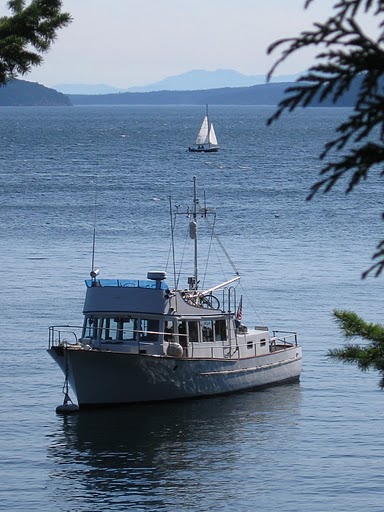I am told that with flushing we can go as many as 5-10 days up here in the cool water PNW, and maybe 2-3 days in warm water seas. During summer we following this protocol by flushing the system before turning it off, and then either making water again, or flushing again, every 3 days.
Pickling
When it comes time to put the system away for the winter I 'pickle' the system. (side note, make sure to check here: mvVikingStar.blogspot.com/../addressing-major-flaw-in-water-maker.html to see a simple modification to allow for complete pickling of the system). Now a key question is: What to use to Pickle? Recently I have seen a few folks talk about using the Pink antifreeze and perhaps this is a good idea. Myself, I follow the DOW membrane technical manual and use a 1% (by weight) concentration of Sodium Metabisulphite. Sodium Metabisulphite can be purchased locally at wine and beer making shops, or over the Internet. I picked up a 2lb package on Ebay for something like $5. Once procured one needs to attach the needed pumps and hoses to allow for circulation of pickling solution. Then:- Mix 1/2 cup of Sodium Metabisulphite in 4 gallons of water (make sure it is clean and chlorine free, use either freshly produced production water or the same water you would use to Flush per above).
- Circulate this mixture for 30 minutes.
- Cap system off and disconnect pickling pump/hoses.
- Make sure to flush VERY WELL the pumps with fresh water; Sodium Metabisulphite can attach some components inside many pumps if left sitting.
- Pickering will be good for 6-12 months.
Cleaning
Another step that is sometimes needed is cleaning. This is indicated when production is reduced greatly (ala 15% or more) - typically caused as the result of fouling of some type in the membranes. Turns out there are two types of fouling: Mineral and/or Biological. Mineral clogging is rather uncommon in our Seawater RO systems, it is more common in industrial waste water deployments. However, Biological fouling can occur - mostly from letting the membranes sit inactive for too long without flushing or pickling. Cleaning is much like Pickling except different chemicals are used, primarily Sodium Hydroxide (aka Lye). Lye can again be purchased locally, look for hand-made soap supply shops, or again over the internet. Cleaning instructions would be:- Mix 1 cup of Sodium Hydroxide (Lye) in 4 gallons of water (make sure it is clean and chlorine free, use the same water you would use to Flush per above). If you have a way to heat the water to 70-80f it will work MUCH better.
- DOW also suggests adding a very small amount of Na-DSS can help, but this is optional and I do not use it.
- Circulate this mixture for 30 minutes.
- Lit sit for 1 hour.
- Flush very well with fresh water (Or run system, discarding all produced water, for 20-30 minutes).
- Restore system and disconnect cleaning pump/hoses.
- Again, make sure to clean VERY WELL the pumps with fresh water, Lye can be very damaging, treat it carefully.
============================================================
I settled on the above directions after looking over perhaps 5-7 different watermaker 'user manuals' as well as Internet resources. My confirmation, and final decision, was the DOW Filmtech technical manual as well as a DOW Tech Fact sheet on membrane cleaning. Each RO maker often has their own special chemicals, which are largely (or actually are) the ones above. IF you are using some other watermaker, do take care that some components can be sensitive to these chemicals, I found out about the Sodium Metabisulphite when it melted my pre-filters! (See: mvVikingStar.blogspot.com/../water-maker-pre-filters-failed.html ).
But also make sure to research a little what water-maker manufactures recommend. A friend sent me a copy of an Email from a water-maker manufacture chastising him in that absolutely under no conditions should Caustic Soda be used to clean their water-maker, you needed to purchase their chemicals. A quick reading of their MSDS sheet for their cleaning power (which was rather costly) reveled it contained Sodium Hydroxide. Guess that is OK as long as you do not call it "Caustic Soda "**. So, YMMV..
Critical references:
Dow Fimtech Tec Manual: "FILMTEC™ Reverse Osmosis Membranes Technical Manual"
Dow Tech Fact Sheet: "Cleaning Procedures for DOW FILMTEC FT30 Elements"
In order to download the tech manual you will need to 'register' at the Dow site. It costs nothing.
Note also that the above links might (likely will) change over time, so try copying he titles and googling for new links..
** and to get insight on 'Caustic Soda' : "Sodium hydroxide, also known as caustic soda, or lye..."
https://en.wikipedia.org/wiki/Sodium_hydroxide

very interesting stuff here Al.
ReplyDelete